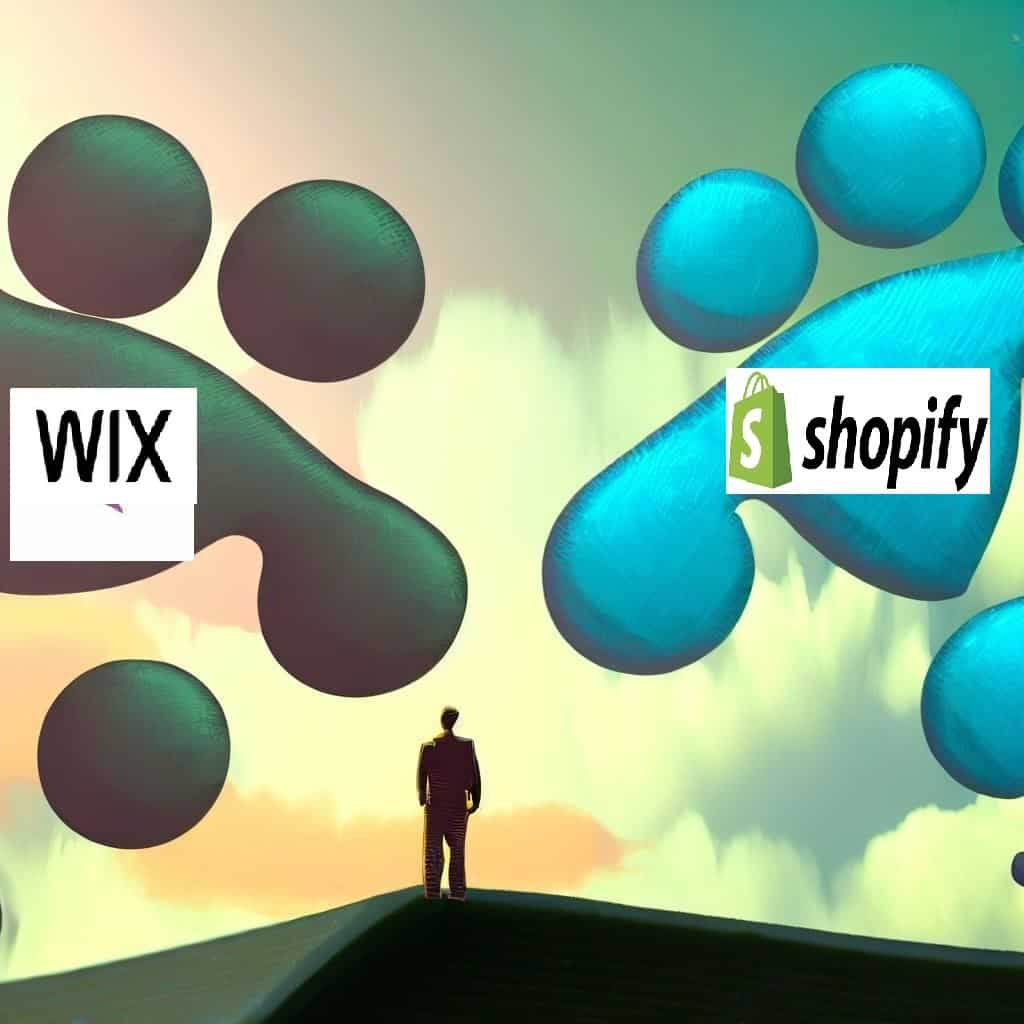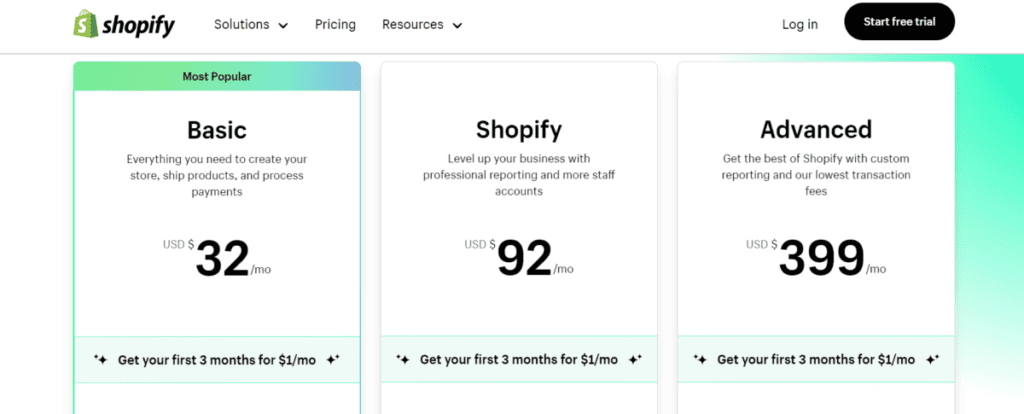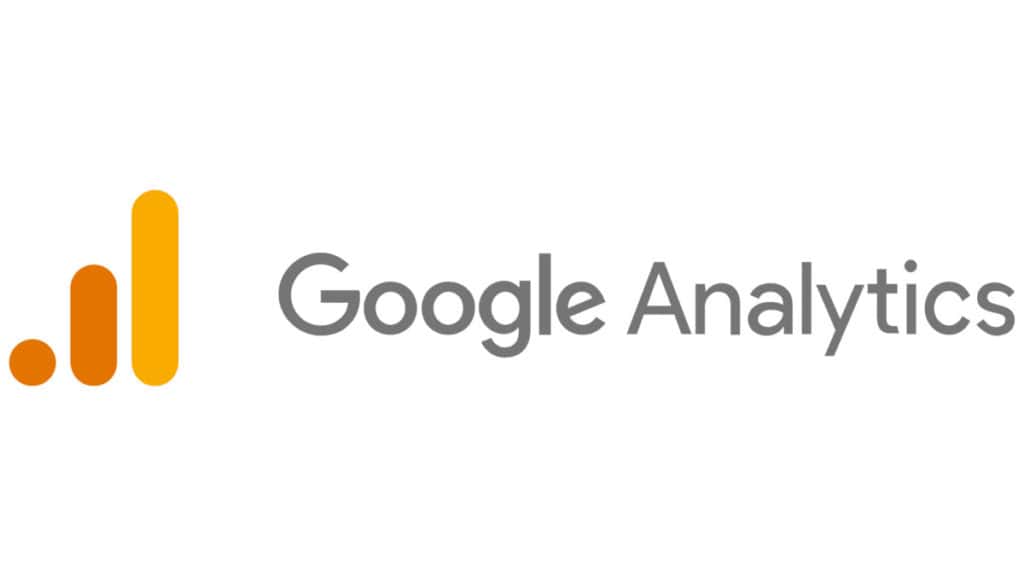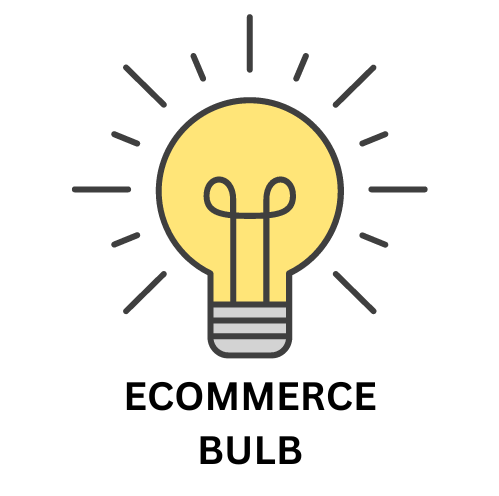
Wix Vs. Shopify? Which is Better eCommerce Platform?
In order to decide which ecommerce platform to use, Shopify vs. Wix. There are many factors that you have to take into consideration. If you want to decide which eCommerce platform to choose, there are many things to consider.
These are some examples of these factors:
- Cost.
- SEO friendliness.
- Page load speed.
- Canonical website URL.
- Indexing Control.
- Customizable HTML capabilities.
- Sitemap Generator.
- Integration with Google Analytics.
- Product Tagging and Categorization.
- Batch Uploading.
- Mobile Optimization.
- Built-in Blogging and Marketing Features.
- Social Sharing Buttons.
- Content Management Capabilities.
- Discount and promotion code tools.
- Easy to use Checkout.
- Reporting tools and custom reports.
- Integration of email marketing tools.
- Multiple payment options.
- Flexibility to add new eCommerce features.
- Exclusive features.
- Cons and pros.
Price (Shopify Vs. WiX):

In Shopify, the price starts from $32 for the basic plan and goes up to (The Advanced Plan) with a price tag of $399.
Do not forget that, in Shopify, you’ll need to buy apps, themes, and designs. You might also need to purchase some services like a domain name and -in some cases- web hosting services.

Wix offers a variety of pricing plans for its e-commerce platform. The plans range in price from $27 per month to $500 per month, depending on the features and functionality that you need.
Wix is one of the big eCommerce platforms that helps merchants create online stores. Wix offers different prices for different needs. The discussion below will point out some of the main features and prices of Wix eCommerce plans:
Business Basic:
This plan costs $23/month and is suitable for small businesses that want to start. It includes 20GB of storage, unlimited bandwidth, a free domain for one year, and no Wix ads. You can accept online payments with no commission fees. A grant for the Access to Wix’s advanced eCommerce tools is on the list of features, & an option to connect your domain and use custom SSL certificates for security.
Business Unlimited:
This plan costs $27/month and is ideal for bigger businesses. It includes the Business Basic plan features. The additional features will contain 35GB of storage, 10 video hours, a professional logo maker, social media logo files, & priority response to customer support.
Business VIP:
This plan costs $49/month for large businesses that want the best of Wix eCommerce. The VIP plan includes everything in the Business Unlimited plan. The additional features will contain 50GB of storage, unlimited video hours, VIP support, & priority customer care.
Shopify and Wix have similar pricing plans and when we compare them, Shopify will have a little edge as a winner for the features they provide for the basic plans.
SEO Capabilities (Shopify Vs. Wix):

Shopify SEO Capabilities:
Shopify is not inherently SEO friendly.
It requires customization, optimization, and a lot of work.
Some of the features Shopify offers are:
Automatic sitemap:
A sitemap is a file that represents the structure and content of a website.
To make it easier for search engines to crawl and index your pages.
URL editability:
You can edit URLs for pages, products, collections, blogs, and articles.
Achieving keyword relevance is very important.
URL optimization:
Shopify adds canonical tags to your pages.
These tags are required to prevent duplicate content issues by redirecting old URLs to new URLs in case of changes.
SSL certification:
Shopify provides a free SSL certificate for your website.
They accomplish this by encrypting data between your website and your customers.
Improve customer trust while increasing your SEO rankings.
Mobile friendliness:
Shopify themes are responsive. They adhere to mobile-first rules. These elements improve SEO performance and user experience.
As you know, mobile friendliness is a ranking factor in Google.
Wix SEO Capabilities:
Short Answer is: Wix is good for SEO. Wix has accumulated significant improvements to its SEO capabilities in recent years. It offers a variety of features and tools to help you improve your website’s ranking in search engine results pages.
Some of the SEO features and tools that Wix user can boast:
- SEO Wizard:
Wix’s SEO Wizard is a step-by-step tutorial that helps optimize the website for search engines.
- Meta tags and descriptions:
Wix has abilities to customize the website’s metatags and descriptions.
- Mobile-friendly design:
Wix templates have evolved to be mobile-friendly. Google focuses more now on Mobile Friendliness, as it knows that most browsing happens from mobile devices.
- Sitemaps:
Wix generates sitemaps for your website, which helps search engines crawl and index your website in less time.
So, when we ask which one is the better eCommerce platform? Wix or Shopify in the field of the SEO capabilities, Wix wins for the recent improvements they have made.
PageLoad Speed (Shopify Vs. WiX):

Shopify PageLoad Speed:
Page load speed is the time it takes for a webpage to load on a user’s browsing device. It is a crucial parameter as a slow-loading page can lead to diminished user engagement. Slow loading websites will also affect engagement and sales.
Shopify is a known ecommerce platform that offers a plethora of traits. One of the main traits of Shopify is the effort to increase page load speed. Shopify’s platform designers wanted it to deliver fast performance. The platform also offers some tools and settings to increase page load speed.
Many factors can affect the page load speed of a Shopify store. Some of these factors are:
-Theme and apps in-use.
-The size and number of images on the page.
– The average user’s internet connection speed.
There are some things that businesses can do to improve the page load speed of their Shopify store, such as:
- Using light themes.
- Image Size Compression.
- Using lazy loading for images
- Minimizing the number of third-party apps.
- Using a content delivery network (CDN)
WiX Pageload Speed:
The page load speed for Wix eCommerce platforms varies depending on many factors. Some of these factors are the size and complexity of the store, the hosting plan, and the visitor’s internet connection. Yet, in general, Wix e-commerce stores have good page load speeds.
According to a recent study by Pingdom, the average page load speed of Wix eCommerce store is 2.9 seconds. WiX is considered faster than the average page load speed of websites worldwide, which is 3.7 seconds.
Wix offers many features and tools to help you improve your store’s page load speed, including:
- Image optimization:
Wix optimizes your images for the web, which can help to improve your store’s page load speed.
- Lazy loading:
Wix lazy loads images. Lazy loads means that images are only loaded when needed. This feature can help to improve your store’s page load speed.
- Content delivery network (CDN):
Wix uses a CDN to deliver your store’s content to visitors from the server that is closest to them. This can help to improve your store’s page load speed worldwide.
So, to make a comparison between Shopify and WiX in the field of Page Load Speeds, WiX wins with a slight margin.
Canonical Website URL (Shopify Vs. WiX):

Shopify’s Canonical Website URL:
Shopify uses the main site/product/item URL as the canonical.
Yet, you can create a canonical URL in Shopify. By adding the link tag with rel=“canonical” attribute to the head of your theme’s HTML code, you can do it in an instant
WiX’s Canonical Website URL:
Wix creates a default canonical URL for all pages, based on the page name and site name. For example, if your site name is My eCommerce Store Website and your page name is Home, the default canonical URL would be https://www.myecommercestore.com/home. You can change the canonical tag for a page in the Advanced SEO tab if you have many URLs that go to that page.
Both Shopify & WiX have good Canonical website URL capabilities, so we’ll call it a tie here.
Indexing Control (Shopify Vs. WiX):

WiX Indexing Control:
Wix has good indexing capabilities. It allows you to control which pages of your website are indexable by search engines. Indexing capabilities are crucial for eCommerce websites; some reasons are below:
- Preventing private or work-in-progress pages from crawling spiders.
- Prevention of duplicate content indexing.
- Disabling indexation of pages with low-quality content. (Search pages and pages with no content).
To control indexing in Wix, you can use the following methods:
- Robots.txt:
You can use a robots.txt file to tell search engines not to index pages on a website.
- Noindex meta tag:
You can add a noindex meta tag to individual pages to prevent search engine spiders from indexing them.
- Wix SEO settings:
- You can also control indexing in the Wix SEO settings. WiX settings are a good option for people with no tech knowledge.
Shopify Indexing Control:
While in Shopify, it is more complicated than that. For most parts, the answer is yes. Shopify has nailed all basic SEO features, including the basic indexing controls.
When we are comparing WiX Vs. Shopify for indexing control, Shopify is a winner for the overall experience.
Why Choose Shopify Over BigCommerce?
How to Choose between Shopify & WooCommerce?
Customizable HTML Capabilities (Shopify Vs. WiX):
Shopify:
There are customizable HTML capabilities in Shopify. There are some methods to add custom HTML to your Shopify website:
- Use the custom HTML section:
It is the direct way to add custom HTML to your Shopify website. You can go to Online Store > Themes and click Customize. Then, click the Sections tab and click the Add section. Select the Custom HTML section and click Add. You can then add your custom HTML code to this section.
- Edit the theme code:
People who are comfortable editing codes will be glad to use this option. You can edit your Shopify theme’s code to add custom HTML. To do this, go to Online Store > Themes and click Customize. Then, click the Theme code tab. You can then edit the HTML code for any of the templates in your theme.
- Use a third-party app:
Some third-party apps enable you to add custom HTML to your Shopify website.
WiX HTML Capabilities:
Wix offers reasonable HTML capabilities, with plenty of features and tools that allow you to customize your website’s HTML.
- HTML editor:
Wix’s HTML editor is a solid tool that allows you to edit your website’s HTML code.
- Third-party integrations:
Wix allows you to sync third-party HTML widgets and apps into it.
- Code snippets:
Wix has a store for code snippets that you can use.
Comparing Wix Vs. Shopify in the HTML capabilities: the result is a tie! They both have good HTML insertion and integration capabilities.
- Optimizely for SaaS companies – Best 6 Optimizely SaaS Case Studies
- How to measure ROI using Optimizely? Best 8 Alternatives to Measure ROI
- Optimizely Enterprise vs Professional Pricing – Best 3 Plans Details
- Optimizely vs Crazy Egg for heatmap analysis – Best 6 Alternatives to Crazy Egg for Heatmaps
- Optimizely Performance Report Setup – Best 4 Steps for Optimizely Performance Report Tutorial
Sitemap Generators (WiX Vs. Shopify):

Shopify Sitemap generator:
Everyone talks about the importance of sitemaps in SEO. What is a sitemap?
A sitemap is a file that tells search engine bots how to find your website’s content. Sitemaps help these bots index and rank new websites faster. Having spiders and bots crawling a website is very important for new websites. These websites typically have few external links pointing to them. It may take some time for crawlers and spiders to discover and index them. Sitemap helps you complete missions faster.
All Shopify stores automatically generate a sitemap.xml file.
By default, these files contain links to all products. Featured product images, pages, collections, and blog posts receive the same permissions.
WiX Sitemap Generator:
Wix’s sitemap generator is useful. A sitemap for your website is automatically generated in WiX, making it easier for search engines to crawl and index your website. Wix’s sitemap generator also allows you to customize your sitemap to include specific pages and exclude others.
To create a sitemap for your Wix website:
Go to the Settings tab on your Wix website.
Click on SEO Basics Under Sitemap, click Generate Sitemap.
Wix automatically generates a sitemap for your website.
To download your sitemap, click Download Sitemap.
To submit your sitemap to Google Search Console, click Submit sitemap to Google Search Console.
Both Shopify and Wix offer sitemap generator capabilities, but Shopify’s sitemap generator is better.
Shopify’s sitemap generator is more comprehensive and customizable and offers many features not available with Wix’s sitemap generator.
When we compare Wix Vs. Shopify Sitemap generators, Shopify is a winner.
Integration With Google Analytics (WiX Vs. Shopify):

Google Analytics is a service that measures user interactions with websites.
Measurement can work across different devices and environments.
Google Analytics usually comes as an installable app or a plugin on your website.
In some cases, it exists as text embedded in your website’s code.
Shopify’s Google Analytics Integration:
You can integrate your Shopify account with Google Ads or Google Analytics for free.
This process requires a valid Google login and JavaScript code field provided by Google.
It requires an active Shopify account.
WiX’s Google Analytics Integration:
Wix allows you to connect your website to Google Analytics by adding your Google Tag ID to the Marketing Integrations section of the dashboard.
You can also use Wix’s unique SEO and marketing tools to optimize your website and store for search engines and customers.
Which One is Better for eCommerce Shopify or WiX in the Google Analytics Comparison?
Shopify has limitations and challenges with Google Analytics integration, including:
- Data sampling.
- Third-party payment gateway tracking.
- Cross-domain tracking.
Meanwhile, Wix does not support some advanced features of Google Analytics:
- E-commerce Funnels.
- Advanced E-commerce.
- Remarketing.
Final decision: Shopify offers more features and flexibility than Wix.
Product Tagging and Categorization (WiX Vs. Shopify):

Shopify’s Product Tagging & Categorization:
In Shopify, you can tag products or use the bulk tag editor to add tags to multiple products.
You can also create custom tag groups to categorize your tags.
When it comes to categorization, you can create categories one by one or use the bulk category editor to categorize multiple products.
You can also create nested categories (categories inside categories) to optimize your categories and product placements.
WiX’s Product Tagging & Categorization:
Product tagging and categorization on the Wix eCommerce platform is excellent.
WiX offers many features and tools to tag and categorize your products, including:
Product tagging:
You can add tags to your products to describe their features and attributes. Tags help customers find the products they’re looking for and can be helpful in case you want to improve your website’s search engine rankings.
Product categorization:
You can organize your products into categories to make it easier for customers to browse your store. You can also use categories to improve website navigation and create targeted marketing campaigns. WiX’s product tagging and categorization features are especially beneficial for e-commerce businesses with a variety of products. Tagging and categorizing your products will help your customers find the products they are looking for and improve your website’s SEO.
Why Shopify Over WiX Tagging & Categorization wise?
Overall, Shopify’s product categorization and tagging system is more powerful and flexible than Wix’s. Yet, it is also more complex.
Shopify’s product categorization and tagging system is more complex than Wix’s, yet it offers more features and flexibility. For example, you can use Shopify’s product categorization and tagging system to:
-Create (product collections) such as “New Products” and “Best Sellers.”
-Create dynamic product filters to let customers filter products by category, tag, or other criteria
-Create product recommendations to help customers see products like the one they’re interested in.
Batch Uploading (WiX Vs. Shopify):

Shopify’s Batch Uploading:
Shopify also lets you batch-upload products using CSV files. You need to create a CSV file containing all the information about the product. After you create your CSV file, import it into Shopify.
Shopify also offers some third-party apps which help you upload products in bulk. For example, the CSV import app lets you import products from different sources, including Excel files, Google Sheets & eBay.
WiX’s Batch Uploading:
Uploading your products to Wix in bulk is good in general. Wix allows you to upload up to 50,000 products simultaneously via a CSV file. This feature is a time-saver for businesses looking to add thousands of products to their store without technical headache or investing in limited resources.
To batch-upload your products to Wix, you need to create a CSV file containing the following information:
-Product name.
-Product Description.
-Product price.
-Product quantity.
-Product category.
-Product tag.
Why Shopify Over WiX product Batch Uploading wise?
This table illustrates a comparison between Shopify and WiX in this regard. We have Shopify as a clear winner here.
| Feature | Shopify | Wix |
|---|---|---|
| Maximum number of products that can be uploaded at a time | 1 million | 50,000 |
| CSV column mapping | Yes | No |
| CSV file validation | Yes | No |
| Scheduled product imports | Yes | No |
Mobile Optimization (Shopify Vs. WiX):

Shopify’s Mobile Optimization:
Shopify is a hosted platform. Mobile optimization is a built-in feature. Shopify uses a responsive design, so your store looks great on any device.
Shopify also offers optimization options for your store on mobile, including responsive themes and mobile-friendly checkout and checkout.
WiX’s Mobile Optimization:
Wix is great for mobile optimization and responsive design. All Wix templates are mobile-friendly by default, and Wix offers a variety of features and tools to help you optimize your website for mobile devices.
Here are some features and tools Wix offers for mobile optimization and responsive design:
Mobile editor:
Wix’s Mobile Editor lets you preview your site on a mobile device and make layout and design changes for mobile devices.
Mobile-specific elements:
Wix offers some mobile-specific elements that you can add to your website to improve your visitors’ mobile experience, such as a “back to top” button and a “quick actions” bar.
Mobile-friendly fonts and images:
Wix resizes fonts and images to fit your mobile device, so you don’t have to worry about fonts and images being too large or small on your mobile screen. Responsive design:
All Wix templates are responsive. Responsive design is crucial because layout and design will adapt to the used device.
Which One is Better for eCommerce Shopify or WiX, Mobile Optimization wise?
Overall, Shopify is better platform for mobile optimization than WiX. It offers more comprehensive and flexible mobile optimization features than Wix. Yet, Wix’s mobile optimization features are still great and may be enough for small businesses on a tight budget.
Built-in Blogging & Marketing Features (WiX Vs. Shopify):

Shopify’s Built-in Blogging & Marketing Features:
Shopify is a hosted service. It continues the purpose of the platform as a marketing and sales platform.
-Countless marketing tools:
-SEO tools, email marketing, and social media marketing are available.
-Shopify also offers many third-party apps help you improve your marketing efforts. For example, the Omnisend app integrates your Shopify store with many email marketing service providers.
WiX’s Built-in Blogging & Marketing Features:
WiX is an eCommerce platform that offers a variety of features and tools for blogging and marketing. Some of the built-in blogging and marketing features Wix offers include:
WiX blog:
This feature allows you to create and manage blogs on your Wix website. Choose from hundreds of customizable templates, add images, videos, and other media, and style your text with the rich text editor. You can also schedule posts, add many authors, enable comments, and use #hashtags and categories to organize your content. Learn more about Wix’s blogging features.
WiX SEO:
It helps you optimize your website for search engines and increase organic traffic.
Wix SEO generates your site’s sitemap, robots.txt file, and canonical tags, and lets you edit meta tags, URL structure, and structured data markup. You can also use Wix SEO Wiz, a free tool that provides a personalized plan to improve your website’s SEO. Learn more about Wix’s SEO features.
Why WiX Over Shopify or Vice Versa?
If you are looking for a platform with comprehensive blogging and marketing features built-in, Wix is a better choice. Yet, if you’re looking for a platform designed for e-commerce, Shopify is a better choice. Shopify’s e-commerce features are more robust than Wix’s e-commerce features.
Social Sharing Buttons Availability (WiX Vs. Shopify):

WiX and Shopify offer many social sharing buttons to add to your website. Some of the most popular social sharing buttons include:
-Facebook.
-X.
LinkedIn.
Pinterest.
Instagram.
YouTube.
Reddit.
WiX and Shopify offer pre-built social sharing buttons to add to your website. You can also customize the appearance of your social sharing buttons to match your website’s branding.
Besides pre-built social sharing buttons, Wix and Shopify offer social sharing integrations with third-party tools. These tools will facilitate addition of advanced social sharing features to your website, including Social Login and Social Media Analytics.
-Wix:
Wix offers a variety of social sharing buttons and integrations with third-party tools. Wix’s most popular social sharing integrations include:
-AddThis.
-ShareThis.
-Social Snap.
-Sumome.
-Shopify:
Shopify also offers a variety of social sharing buttons and integrations with third-party tools. Some of Shopify’s most popular social sharing integrations include:
-AddThis.
-ShareThis.
-Social Snap.
-ShareKit.
Which One is Better Shopify or WiX in Social Sharing Buttons Availability?
With a wide range of social sharing options, If you’re looking for a platform, both Wix and Shopify are good options. Both offer a variety of pre-built social sharing buttons and integrations with third-party tools.
Content Management Capabilities (WiX Vs. Shopify):

Content management capabilities are features that allow you to create, edit, organize, and publish content online. Content can include text, images, video, audio, and other multimedia elements. Content management capabilities are vital for ecommerce platforms. They allow showcasing products and services, attracting and engaging customers. They’ll also help optimize your website for your business.
Wix and Shopify are two eCommerce platforms that offer different levels and types of content management capabilities. Wix is a website builder that lets you create and manage your website using a drag-and-drop editor and hundreds of customizable templates. Shopify is a dedicated eCommerce platform that build and manage your online store using a variety of themes and apps.
Which One Has Better Content Management capabilities, WiX or Shopify?
Wix and Shopify have different strengths and weaknesses in content management capabilities. Wix helps small businesses and creative bloggers who value usability and aesthetic design. And it is suitable for those who don’t need advanced, scalable e-commerce tools. Shopify helps medium to large ecommerce businesses with a sales mindset and large, diverse inventory. And those who need powerful and flexible ecommerce tools to support their growth, development and expansion.
Discounts & Promotion Codes (WiX Vs. Shopify):

Shopify’s Discounts & Promo Codes Capabilities:
Shopify enables you to create and manage discount codes for your online store from your admin panel. Discount codes can have various conditions and restrictions like:
-Minimum Order Quantities.
-Expiration Dates.
-Usage Restrictions.
-Customer Qualifications.
You can also create automatic discounts for your customers’ shopping carts without a code.
Shopify has other integrations and apps that improve the functionality of discounts and promo codes.
For example, you can use apps like Privy, Wheelio, and Spin-a-Sale to create gamified popups that offer discounts and gifts to your visitors. You can also use apps like Loox, Stamped.io, and Judge.me to offer discounts and perks in exchange for reviews and recommendations.
WiX’s Discount & Promo Codes Capabilities:
Wix also lets you create and manage coupon codes for your online store from your Wix dashboard. Yet, Wix offers fewer coupon code options and features than Shopify. For example, Wix doesn’t support automatic discounts, free shipping discounts, or “buy X, get Y” discounts. Wix also does not allow you to limit coupon codes to specific products, collections, or customers.
Wix has fewer integrations and apps to improve the functionality of discounts and promo codes. For example, you can use apps like Gift and Coupon Pop to create pop-ups that offer discounts or gifts to your visitors. Yet, Wix supports no apps that allow you to offer discounts or perks for reviews and recommendations.
Which is Better? WiX Vs. Shopify in Discounts & Promo Codes Capabilities
Shopify offers more advanced and extensive discount and promo code capabilities than Wix. Shopify has greater flexibility and control over your coupon codes. Shopify also has more integrations and apps that can help you increase sales and conversions. On the other hand, Wix offers more basic and limited promo codes and discounts, which may not meet your ecommerce needs and goals.
Easy to Use Checkout (WiX Vs. Shopify):

Shopify’s Easy Use to Checkout Capabilities:
Shopify provides a world-class checkout experience that is fast, secure, and customizable. You can use “Shopify Payments” (Shopify’s payment gateway) to accept online payments without transaction fees. You can also try over 100 other payment methods like PayPal, Stripe, Apple Pay & more. You can also enable functionalities like quick checkout, dynamic checkout buttons, and express checkout to reduce friction and increase conversions.
Shopify allows you to customize the checkout page with your logo, colours, fonts, and language.
Custom fields like notes, gift options, or terms and conditions are available. You can use third-party apps and integrations to enhance your checkout page with features like upsells, cross-sells, countdown timers, and more.
WiX’s Easy to Use Checkout Capabilities:
Wix also offers a secure and reliable payment process, but it has some restrictions and limitations compared to Shopify.
You can use Wix Payments (Wix’s payment gateway) to accept online payments without transaction fees, but it’s only available in certain countries and regions. You can also use other payment methods, such as PayPal, Stripe, etc., but they may incur extra fees. You can also enable features like quick buy buttons and guest checkout. But they’re not as advanced and flexible as Shopify’s.
Wix doesn’t let you customize the checkout page as much as Shopify. You can change the background colour and button colour of the checkout page. You can’t add custom fields, logos, or other elements to your checkout page. You cannot use third-party apps or integrations to enhance your checkout page with more features.
WiX Vs. Shopify, Which Has the Best Easy to Use Checkout?
Shopify offers a better and more simple checkout process than Wix. It offers more features, options, and flexibility for your online store. Shopify’s checkout process inherently optimize your sales and conversions.
On the other hand, Wix’s checkout process is limited & basic, Shopify is a clear winner in this comparison.
Reporting Tools and Custom Reports (WiX Vs. Shopify):

Shopify’s Reporting Tools & Custom Report Capabilities:
Shopify offers a variety of reports and analytics to help you track and measure your online store’s performance and growth.
You can access different types of reports, such as sales, customers, products, inventory & marketing. You can customize reporting by adding, removing, or rearranging columns. You can also export your reports as CSV files.
Shopify offers more integrations and apps to enhance reporting tools and custom reports.
For example, you can use apps like Better Reports, Data Export, or Report Pundit to create and automate complex and detailed reports, such as profit and loss, lifetime value of customers, inventory valuation, etc.
You can also use apps like Google Analytics, Lucky Orange or Hotjar to track and analyse your website’s traffic and behaviour and optimize conversion rates.
WiX’s Reporting Tools & Custom Report Capabilities:
Wix also provides reporting and analytics to help you better understand your website and make business decisions. You can access basic reports, such as traffic, revenue, orders, and conversions. You can generate custom reports by choosing how to display data, such as by chart type, date range, or device. You can also create new custom reports from scratch or copy existing ones. Yet, Wix offers fewer options and features for your reporting than Shopify. For example, Wix doesn’t support exporting or printing your reports. Advanced filters & calculations are not available.
Wix has fewer integrations & apps to enhance reporting and custom reporting tools.
For example, you can use apps like Visitor Analytics, Form Builder Plus+, or Wix Forms to collect and process data. Yet, Wix lacks apps to create and automate advanced, personalized reports, such as profit and loss, customer lifetime value, and inventory valuation.
Conclusion: Which Has Better Reporting Tools and Custom Reports? WiX Vs. Shopify.
Shopify has more advanced and comprehensive reporting and custom reporting tools than Wix.
Shopify offers greater flexibility and control over reporting. It provides more integrations and apps to help you create and automate complex and detailed reports.
On the other hand, WiX offers more basic and limited customization and reporting tools that may not meet your ecommerce needs and goals.
Integration of Email Marketing Tools (WiX Vs. Shopify):

Shopify’s Email Marketing Integration:
Shopify doesn’t have a built-in email marketing tool. Yet it does integrate with many third-party email marketing services, such as Mailchimp, Klaviyo, Omnisend, and more.
You can choose an email marketing service that fits your needs and budget and connect it to your Shopify store using an app or integration.
Some email marketing services offer free plans or trials, while others charge based on the number of contacts, emails, or features you use.
Shopify also offers many marketing integrations. It enables businesses to connect marketing tools like Google Analytics, Google Ads, and Facebook Pixel.
These integrations can help you measure and improve your email marketing campaigns. It also helps reach and re-engage your audience across different platforms.
WiX’s Email Marketing Integration:
Wix allows you to send a newsletter to 200 subscribers/month at no charge. If that’s not enough, you can upgrade to Wix’s paid email marketing tool (Wix Ascend). Ascend provides premium features like unlimited contacts, advanced analytics, automated automation and segmentation.
Wix Ascend offers pricing plans ranging from $10 to $49 per month, depending on the number of email campaigns and features you need.
Wix offers many marketing integrations.
These integrations will help businesses to connect marketing tools, like Google Analytics, Google Ads, and Facebook Pixel & online stores.
These integrations can help you track and optimize your email marketing campaigns. It’ll also help to target and retarget your audience across different channels.
Why WiX Over Shopify? In Email Marketing integration.
Wix and Shopify have good email marketing integration. But they have different approaches and options.
Wix has its email marketing tool, Wix Ascend, which offers a variety of features and plans to suit different needs and budgets.
Shopify doesn’t have its email marketing tools. Yet, it does integrate with many third-party email marketing services. Shopify offers a variety of features and plans for different needs and budgets.
WiX has an edge because of WiX Ascend, but if you need more than 200 subscribers, it is better to get an email marketing services subscription.
Multiple Payment Options (WiX Vs. Shopify):

Shopify’s Multiple Payment Options:
Shopify works with over 100 payment channels, including well-known ones like PayPal, Stripe & Apple Pay. You can select payment convenient methods for your consumers and your business. You can also take online payments without transaction costs if Shopify Payments are activated.
Shopify Payments accepts credit cards, debit cards, local payment options, and digital wallets in 17 countries and regions.
WiX’s Multiple Payment Options:
Wix works with over 50 payment providers, including Stripe and PayPal.
Wix Payments, its payment gateway, takes 2.9% of the transaction value plus a set fee of $0.30.
Wix Payments accepts credit cards, debit cards, and local payment methods in 14 countries and regions.
Wix does not enable digital wallets such as Apple Pay or Google Pay, which can provide your consumers with a faster and more convenient checkout experience.
Why Shopify Over WiX in Multiple payment Options?
Shopify offers more features, alternatives, and flexibility for your online store than Wix.
Wix’s payment choices are more basic and limited.
Shopify’s payment options help you to optimise sales and conversions. Shopify is a winner in this comparison.
Flexibility to Add New eCommerce Features (WiX Vs. Shopify):

Shopify’s New Features Capabilities:
Shopify has a huge and diverse app store with over 6,000 apps that can assist you in adding and improving various features for your online business. Apps for marketing, sales, design, customer support, analytics, and other purposes are available. Apps connect your store to other platforms and services like Facebook, Instagram, Google & Mailchimp. Installing and utilising apps on Shopify is often simple, and you can manage them from your Shopify dashboard.
Shopify enables viewing and updating the website code, giving you more freedom and control over your online store’s features and functionality. To customise and optimise your site, you can utilise Shopify’s coding language, Liquid, like HTML, CSS, and JavaScript. You can also consult a Shopify specialist or developer for help with sophisticated features. Yet, modifying your site’s code requires technical knowledge and abilities, and you should always back up a website before making any changes.
WiX’s New Features Capabilities:
Wix also includes an app market with over 300 apps that can assist you in adding and improving various elements to your website. Apps for ecommerce, blogging, booking, forms, and other purposes are available. Apps connect your site to other platforms and services like Google, Facebook, and Instagram. Wix’s app market is smaller and less focused on ecommerce than Shopify’s. Some apps may have limited functionality or compatibility concerns.
Wix app installation and use may need extra steps and tweaks than Shopify.
Wix does not allow you to access or change your website’s code, which limits your ability to add and adjust features and functionality. You can only use the features and tools provided by Wix & the apps available in the app store. You can also utilise Corvid, Wix’s proprietary coding tool, to add custom code to your site using JavaScript and Wix APIs.
However, Corvid is not a full-fledged development interface and thus may not support certain features or connectors in need. Corvid may require some coding knowledge and experience. You should always test your code before submitting it.
Why Shopify Over WiX in Addition of New Features Capabilities?
Shopify is easier to add new features to than Wix. It provides more features, alternatives, and flexibility for your online store.
The app store and coding skills of Shopify can assist you in creating and managing a sophisticated and customized online ecommerce website.
Wix is more difficult to add new features to than Shopify because it provides fewer features, alternatives, and flexibility for your site. Although Wix’s app market and coding tool can assist you in creating and managing a simple yet attractive website, they may not meet your ecommerce objectives and ambitions.
Exclusive Features (WiX Vs. Shopify):

Shopify’s Exclusive Features:
Shopify POS is a service that allows you to sell your products in person using a mobile device or a card reader. You can sync your inventory, orders, and customers between online and offline channels. It accepts many payment options, including cash, credit cards, and digital wallets.
Shopify POS helps make and print receipts, provide discounts, and manage employees.
Shopify Experts is a network of professionals who can assist you with many elements of your online store, such as design, development, marketing, photography, and more. You can look through the profiles of several specialists, compare their pricing and reviews, and pick the best one for your needs and budget. You may also contact your expert and track the development of your project via the Shopify platform.
WiX’s Exclusive Features:
Wix ADI, which stands for Artificial Design Intelligence, is a feature. This function allows you to generate a website based on your responses to a few questions. Wix ADI will create a unique design for your site, which you can customize using the Wix Editor. You may also toggle between Wix ADI and Wix Editor at any time to take advantage of the best one of them.
Wix Corvid is a coding tool that enables you to add bespoke features and interactivity to your website. Wix Corvid may be used to develop dynamic sites, databases, forms, APIs, and more. You may also use JavaScript and Wix APIs to access and alter your site’s elements and data. Wix Corvid is within the Wix Editor, and you may toggle between the code and design views at any time.
Market Share (WiX Vs. Shopify):

Statista estimates that the global market share of e-commerce websites Shopify versus Wix in 2023 will be as follows:
- Shopify (10.23%)
- Wix: 8.09%
These statistics mean that Shopify has more e-commerce websites than Wix.
Shopify is more popular than Wix for e-commerce websites for many reasons.
- Shopify is created primarily for e-commerce, whereas Wix is a more general-purpose website builder.
- Shopify includes a built-in shopping cart, payment processing options, and shipment management tools to help businesses sell things online.
CONS Of WiX Vs. Shopify:

Cons of Shopify:
Shopify can be more expensive than Wix, especially since premium themes and apps are adding up.
If Shopify Payments is not the preferred method, Shopify will charge transaction fees when other payment gateways are in use.
Shopify has a steeper learning curve than Wix because customizing and optimizing your site beyond the basic features and settings requires some coding expertise and technical skills.
Shopify’s blogging features are also more limited and less user-friendly than Wix’s.
Cons of WiX:
Wix has fewer ecommerce services and possibilities than Shopify, such as automated discounts, free delivery, and buy X get Y deals.
Wix also does not enable digital wallets like Apple Pay or Google Pay. These digital wallets enhance the customer experience with a faster and more convenient checkout.
Wix offers less scalability and flexibility than Shopify because it limits the quantity and type of products you may sell.
Wix also does not allow you to access or change your website’s code, which limits your capacity to add and adjust features and functionality.
BuiltWith.com Data (WiX Vs. Shopify):

As of October 2023, more than 2.7 million websites worlwide use WiX technology. While more than 4 million website use Shopify as eCommerce platform according to Builtwith.com.
Hidden Charges & Fees (WiX Vs. Shopify):

Shopify’s Hidden Charges & Fees:
Unless you use Shopify Payments, which is the payment gateway of Shopify, they’ll charge transaction fees when utilizing other payment gateways.
Transaction costs range from 0.5% to 2%. Shopify Payments is only available in a few countries and regions, and the fees range from 2.4% to 2.9% + 30 cents for each transaction.
Shopify has a huge and diverse app store with over 6,000 apps that can assist you in adding and improving various features for your online business. Many apps are not free and may impose monthly subscriptions, one-time payments, or usage-based costs. Some applications may need you to upgrade your Shopify plan to use their features.
Shopify has plans ranging from $29 to $299/month to meet demands and budgets. The cost reflects the annual payments. If you pay monthly, you will pay more. The Basic Shopify package, for example, costs $29 per month if paid annually, but $35 per month if paid monthly.
WiX’s Hidden Charges & Fees:
Wix does not charge transaction fees when using accepted payment options, such as Wix Payments, Stripe, or PayPal. Wix Payments, on the other hand, costs 2.9% + 30 cents per transaction in the United States, and extra fees may vary by area and payment gateway. Wix Payments is also limited to specific countries.
Wix also includes an app market with over 300 apps that can assist you in adding and improving various elements to your website.
Wix’s app market is smaller and less focused on ecommerce than Shopify’s, and some apps may have limited functionality or compatibility concerns.
Some apps may need an upgrade to your Wix subscription to grant full functionality.
Conclusion (Comparison Table for Shopify Vs. WiX):
| eCommerce Platform | Shopify | WiX |
|---|---|---|
| Price | 7 | 6.7 |
| SEO Friendliness | 7.5 | 8 |
| Page Load Speed | 8.5 | 8.7 |
| Canonical Website URL | 9 | 9 |
| Indexing Control | 8.5 | 7 |
| Customizable HTML capabilities | 9 | 9 |
| Sitemap Generator | 9 | 8 |
| Integration With Google Analytics | 7.5 | 7 |
| Product Tagging & Categorization | 6.5 | 5 |
| Batch Uploading | 7 | 5 |
| Mobile Optimization | 9 | 7 |
| Built-in Blogging & Marketing Features | 7 | 6.7 |
| Social Sharing Buttons | 9 | 9 |
| Content Management Capabilities | 8 | 7.7 |
| Discount & Promo Code Tools | 9 | 7.6 |
| Easy to Use Checkout | 9.5 | 6.7 |
| Reporting Tools & Custom Reports | 8.5 | 6.4 |
| Integration of Email Marketing Tools | 9 | 8.7 |
| Multiple Payment Options | 9 | 8 |
| Flexibility to Add New eCommerce Features | 9 | 7.1 |
| Exclusive Features | 9 | 8.7 |
| Market Share | 9.5 | 9.1 |
| CONS & PROS | 8 | 7.8 |
| Builtwith.com Data Index | 9.5 | 9.3 |
| Hidden Fees & Charges | 7.5 | 7.3 |
| Overall Assessment (Average) | 8.4 | 7.62 |


Leave a Reply